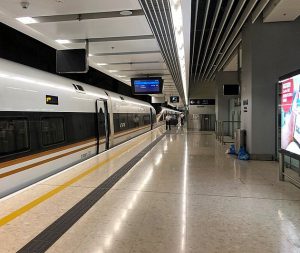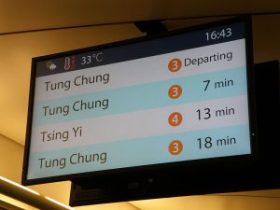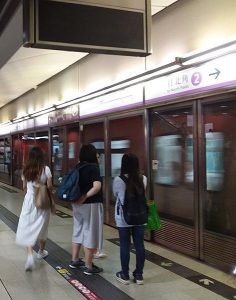It would take hiring nearly 10,000 people to make one colossal system like Hong Kong’s subway operate almost flawlessly. On average, about 2,600 minor or bigger interventions and engineering repairs are performed each week on the city’s rail tracks.

For seven days a week, 365 days a year, this machinery never stops, thanks to the excellent infrastructure and professional workers. This system is always on, just like the online casinos that offer best slots sites for UK. Even if this is an unimaginable compact and extensive system, the Hong Kong Subway has the lowest train delay rate in the world. The reason why it’s possible to manage such a complex network of jobs and human resources is that the Artificial Intelligence delegates all the work.
Andy Chun from the City University of Hong Kong has designed for MTR, a company that owns the subway, an AI system that integrates multiple business sectors into one unit. Also, by using machine learning, it is capable of creating the most optimal task allocation and schedule for required engineering works.
Chun implemented the knowledge and experience of specialists from the same field into the software. Hence, the algorithm actually uses human expertise when making the most favorable schedule of duties.

Furthermore, the system is programmed to require human authorization and, in the case of an emergency, it is possible to add specific commands manually. Therefore, there is no risk of a bug in the AI software that would cause more significant consequences except for those that are human error.
Yet, during the creation of such a sophisticated system, a team of Hong Kong scientists encountered many obstacles. Perhaps the biggest challenge was finding the most appropriate AI algorithm that will design schedules. In the end, they opted for a generic model that will always compare different solutions to select the most optimum one.
Besides the fact that there are no delays or confusion over job allocation, machine learning can capture vast knowledge and allocate resources better than ever before. Moreover, Chun has inserted over 200 rules into the software (e.g. reduced levels of noise in the populated area).
Analytics also show that AI prevents arguments about repairs that used to waste a lot of time before. What’s interesting is that those arguments also caused a loss of hundreds of thousands of dollars annually.

Hong Kong has the most reliable subway system in the world, with 99.9 percent of arrivals and departures on time. With more than 1.6 billion passengers a year, it is undoubtedly one of the best transportation choices in this part of the World.
MTP, the company that owns Hong Kong’s subway, attempts to introduce AI supervisors in other networks it manages, first in Beijing and then in Stockholm, London, and Melbourne. Although all these public transportation organizations have the same owner, Hong Kong is incomparable to others and is a far more advanced system than the London subway.
To be able to implement AI into public services, we must have enough knowledge and expertise, as well as the necessary infrastructure to support AI technology. Hong Kong is a city of modern technology, so AI is not present only in subway managing, but also in many other public services.
For example, the immigration department that issues travel documents and residence visas has been using an AI-enabled application for a long time. The algorithm checks compliance and sorts applications for data processing, while the decision is still a human factor.
Copyright 2025 | Theme By WPHobby. Proudly powered by WordPress